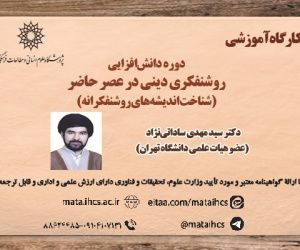بررسی میزان آسیب پذیری و تاب آوری شهر اصفهان در برابر پدیده فرونشست زمین (مقاله علمی وزارت علوم)
درجه علمی: نشریه علمی (وزارت علوم)
آرشیو
چکیده
پدیده فرونشست سطح زمین ناشی از عوامل طبیعی و فعالیت های انسانی در نقاط مختلف دنیا و در طی سال های اخیر در کشور به خصوص در اصفهان به علت برداشت بی رویه از آب های زیرزمینی، خشکسالی و عوامل دیگر پدیدار و سبب آسیب های جدی به زمین های کشاورزی، ساختمان های مسکونی، جاده ها و دیگر سازندها و بروز خسارت های زیست محیطی، اقتصادی و اجتماعی شده است. تحلیل آسیب پذیری و تاب آوری شهری ناشی از این فرونشست زمین در اصفهان به عنوان ابزاری در راستای پیشگیری از زایش فاجعه مورد توجه قرار گرفته است. این پژوهش بر آن است تا به پرسش اینکه شهر اصفهان در برابر پدیده فرونشست زمین چه مقدار آسیب پذیر است؟ پاسخ دهد. هدف این پژوهش بررسی نقش تاب آوری شهری بر میزان آسیب پذیری شهر اصفهان در برابر پدیده فرونشست زمین باشد. در این مطالعه ابتدا با استفاده از تکنیک تداخل سنجی راداری نرخ و دامنه فرونشست به عنوان فاکتور عامل در تولید خطر به تحلیلگر سیستم در محیط GIS وارد شد سپس با کمک تحلیل های کیفی به بررسی شاخص های تاب آوری شهری بر روی شهر اصفهان پرداخته شد. نتایج بیانگر این است که نواحی از شمال شهر و قسمت هایی به صورت نواری به علت نزدیکی به عوامل خطرزا مانند گسل، مسیل، قنات های قدیمی، منابع ذخیره سوخت، لوله انتقال نفت به این مخازن و تغییر مداوم مسیر رود روی آنها هم موجب افزایش آسیب پذیری است. همچنین نشان می دهد که اکثر ساخت وسازهای موجود در منطقه غیراصولی و غیرمتناسب با شرایط مخاطره آمیز است.Investigating the Vulnerability and Resilience of Isfahan City Against the Phenomenon of Land Subsidence
In recent years, the land subsidence phenomenon caused by potential and human activities has emerged in different parts of the world, Iran, and especially in Isfahan due to excessive extraction of groundwater, drought, and other factors. Such a phenomenon has brought about serious damage to the environment, infrastructure, economy, agricultural land, residential buildings, roads, and other structures. As a result, it has sustained environmental, economic, and social losses. For this reason, the analysis of urban vulnerability and resilience resulting from this land subsidence in Isfahan has been considered as a tool to prevent the occurrence of disasters. This research aims to answer the question of how vulnerable and resilient Isfahan city is to the phenomenon of land subsidence. The purpose of this research is to investigate the role of urban resilience on the vulnerability of Isfahan city to the phenomenon of land subsidence. In this study, first, using radar interferometry technique, the rate and amplitude of subsidence as a factor in generating risk was entered into the system analyzer in the GIS environment Then, with the help of qualitative analyses, urban resilience indicators were examined in the city of Isfahan.. The results indicate that areas north of the city and parts in a strip shape are also at increased vulnerability due to their proximity to hazardous factors such as faults, channels, old aqueducts, fuel storage sources, oil pipelines to these reservoirs, and the constant change in the course of the river. It also shows that most of the existing construction in the area is unprincipled and disproportionate to the hazardous conditions.







